Natural Hybrids (between 2 species)
Nature is always making hybrids, a constantly churning gene pool, selecting for new genetics that have the potential to survive and multiply. These hybrids are called natural hybrids, hybrid species, or interspecific hybrids. Closely related species that share the same geographic location can combine genes, and develop an interspecific hybrid better suited to surviving a new environment. Begonias are known for doing this, and new hybrid species are often found in areas where the ecosystem has been disturbed by lumber harvesting, or urban development, forcing two species into closer contact as undisturbed habitat shrinks.
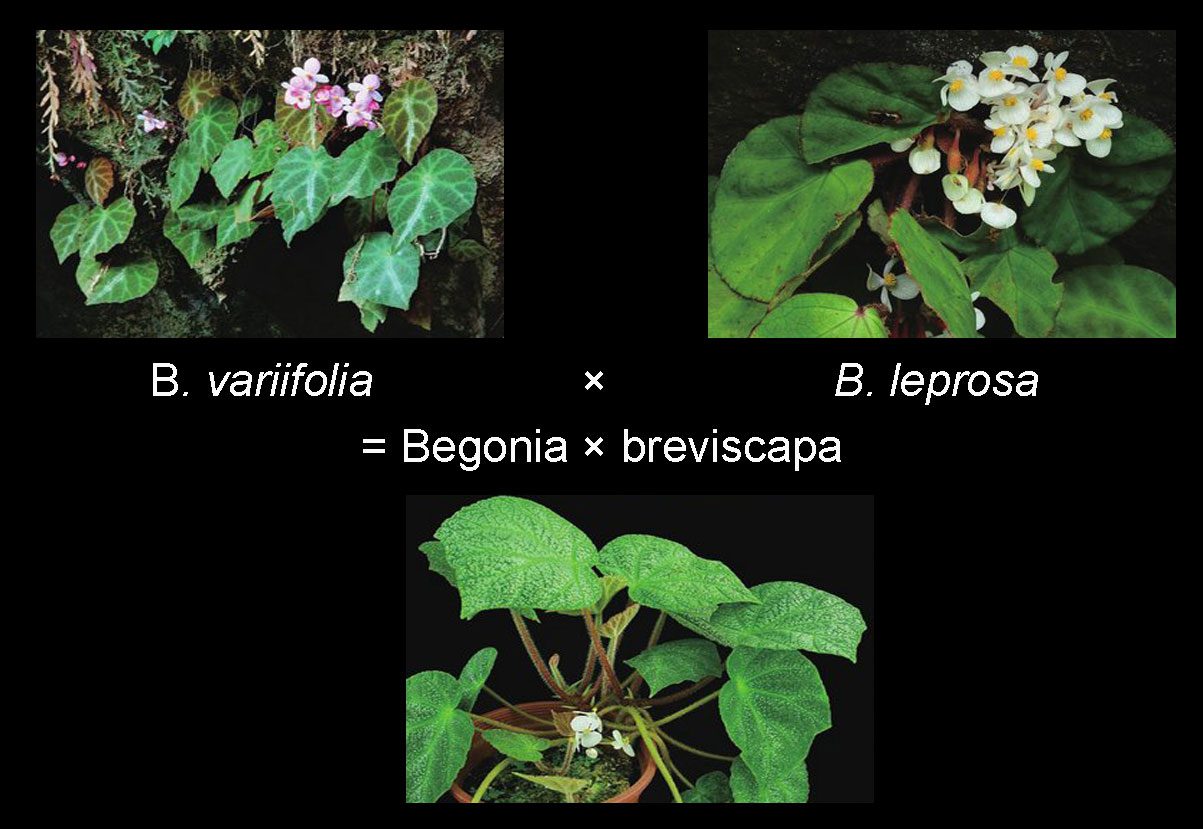
Begonia ×breviscapa | Photo: Ching I Peng
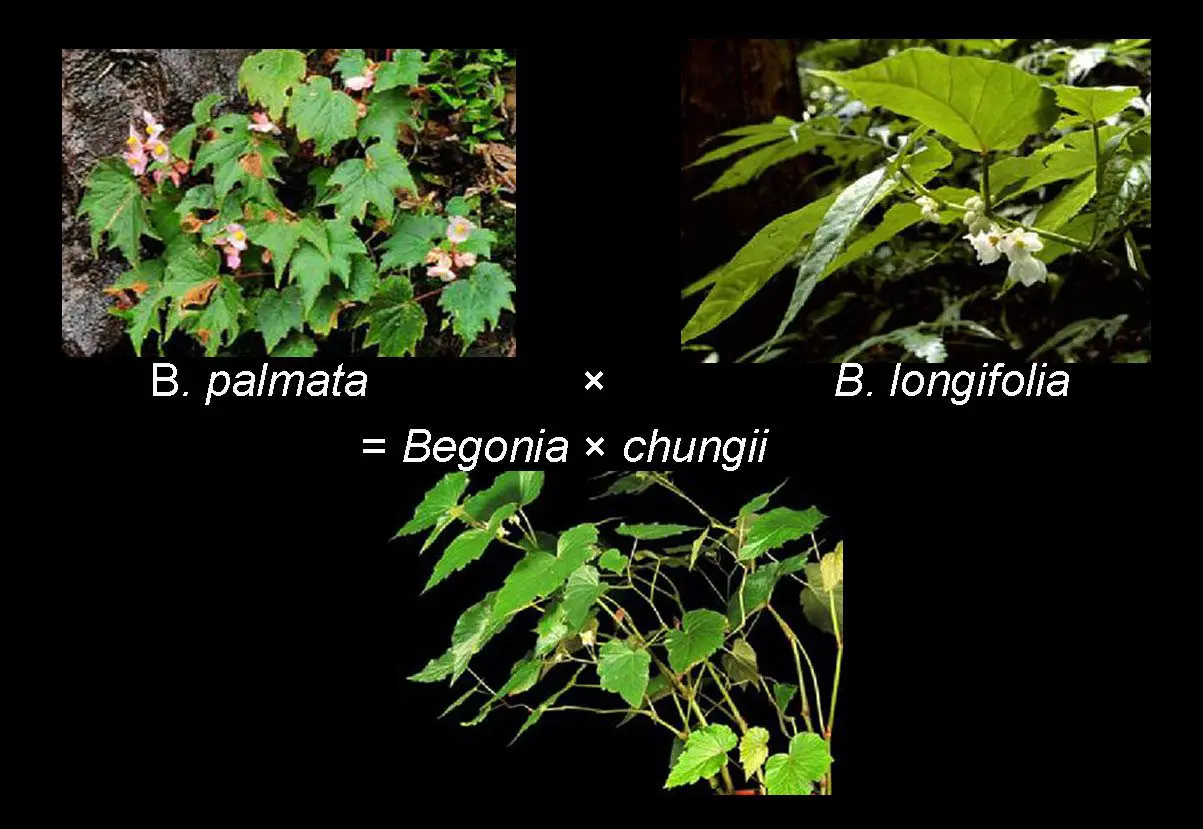
Begonia ×chungii | Photo: Ching-I Peng
Recent scientific publications are providing some great examples, such as: Begonia ×breviscapa from northwestern Guangxi, China, is a natural hybrid between B. variifolia and B. leprosa. This is the first documentation of natural hybridization between begonias of two different sections in mainland China. Images from Begonia ×breviscapa (Begoniaceae), a new intersectional natural hybrid from limestone areas in Guangxi, China Ching I Peng, Yan Liu, Shin-Ming Ku, Yoshiko Kono, and Kuo-Fang Chung. Another example is Begonia ×chungii from central Taiwan, a natural hybrid between B. palmata and B. longifolia. Images from Begonia ×chungii (Begoniaceae), a new natural hybrid in Taiwan. April 2009. Botanical Studies 50(2):241-250. Ching-I Peng, and Shin-Ming KU.
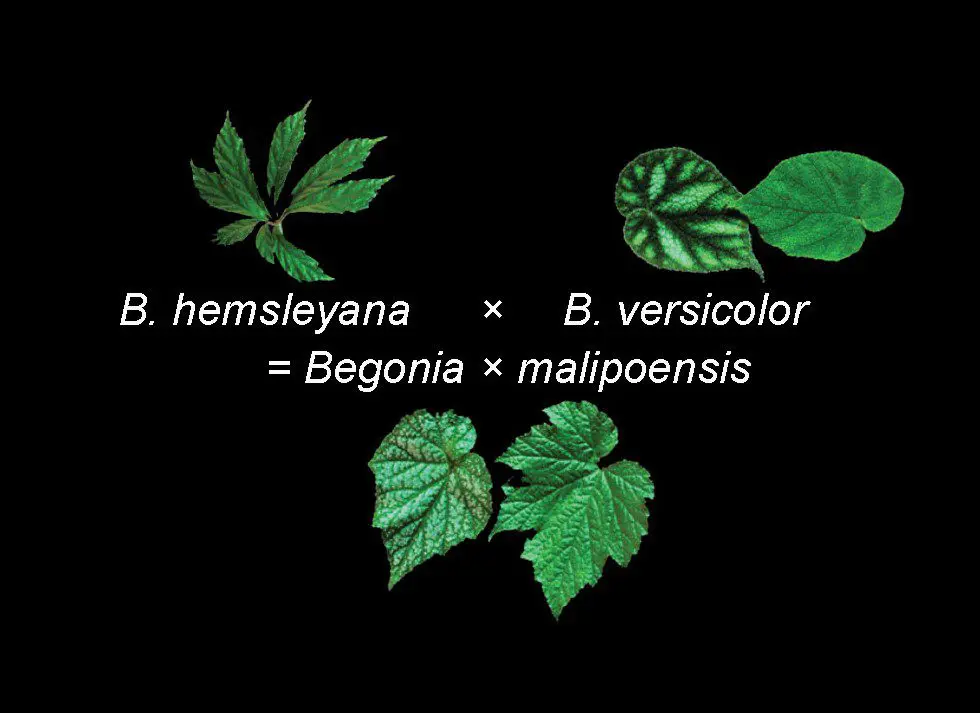
Begonia ×malipoensis | Photo: Dai-Ke Tian
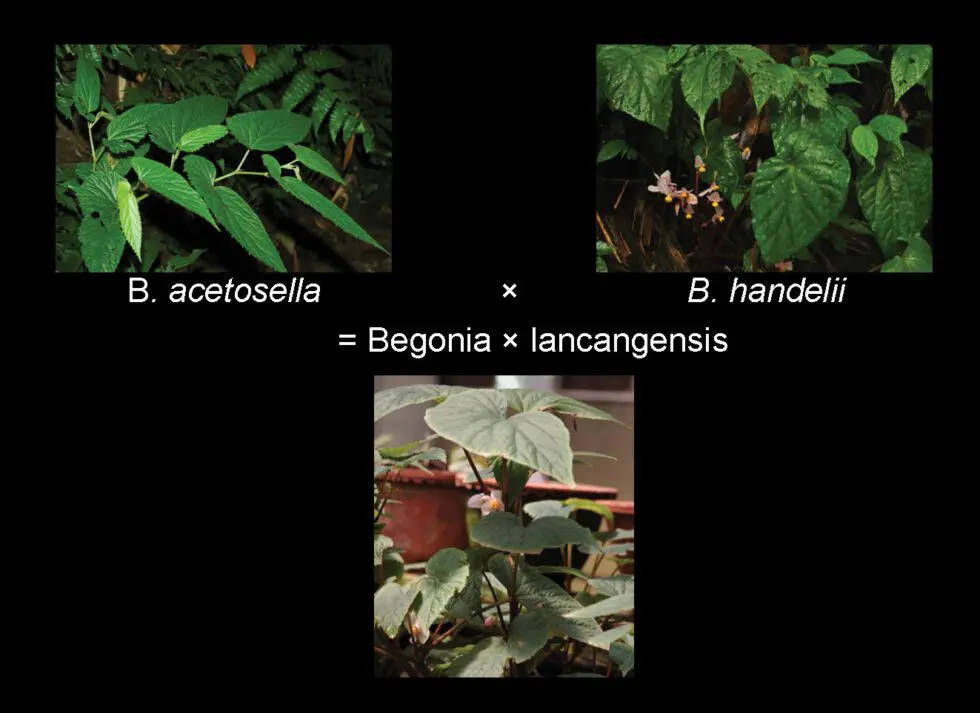
Begonia ×lancangensis | Photo: Dai-Ke Tian
Variety (within a species)
When a plant within the natural population mutates and forms something new and that persists, it is often called a variety. Varieties often come about as a result of natural mutations and usually can be reproduced by seed, but not always. In nature any mutations would have to be able to reproduce to persist, if they could not reproduce they would disappear quickly.

In plant taxonomy, a variety is a plant within a species group in nature that develops a unique quality. The trait (a new flower color, or a chartreuse leaf color, or variegation) is stable and can be reproduced. But, a variety doesn’t automatically become a cultivar. It has to be considered ‘valuable’ and given a cultivar name to become a cultivar.
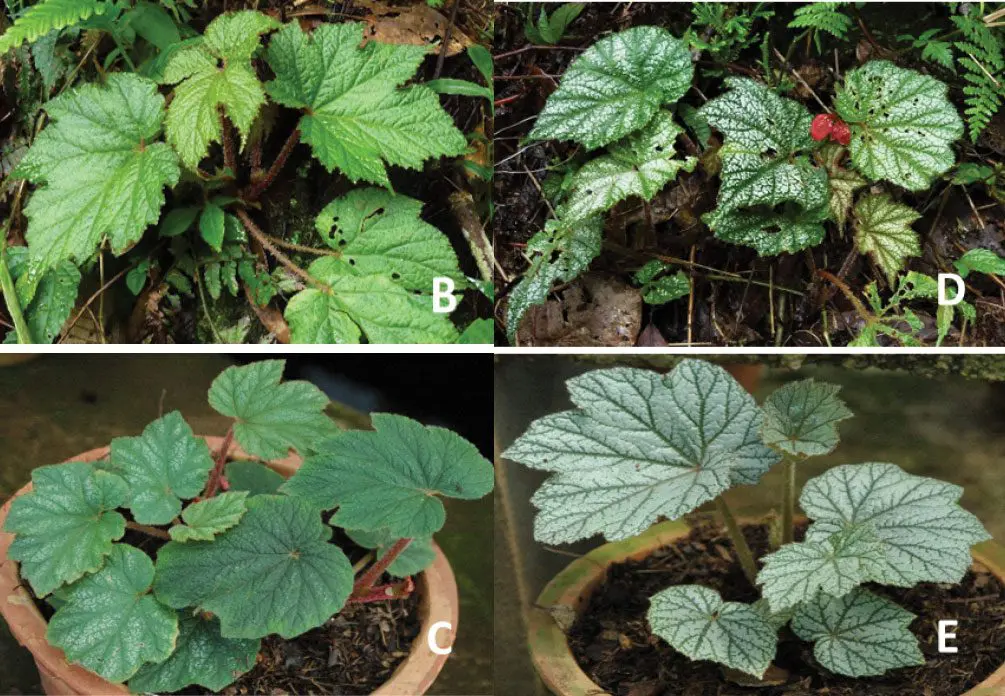
FROM NATURE
A SPECIES is a natural grouping of similar plants that can interbreed and reproduce by seed.
A NATURAL HYBRID occurs between 2 species.
A VARIETY or FORM appears naturally within a species, but it has some distinctive trait which sets it apart.
MAN-MADE
MAN MADE HYBRID GROUPINGS like B. ×tuberhybrida, B. rex cultorum, and others are often confused with species.
A MAN-MADE HYBRID can be a mix of hybrid and/or species genetics.
A CULTIVAR is an individual named seedling, with distinctive characteristics.

